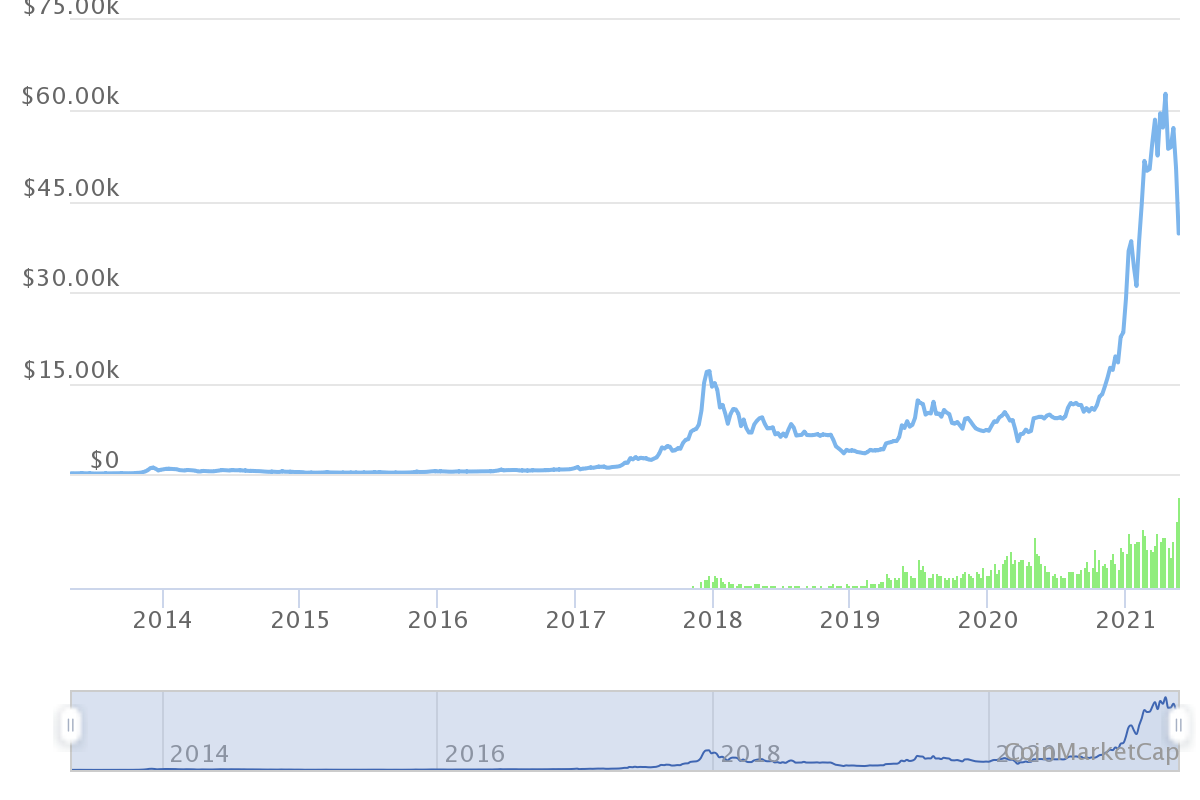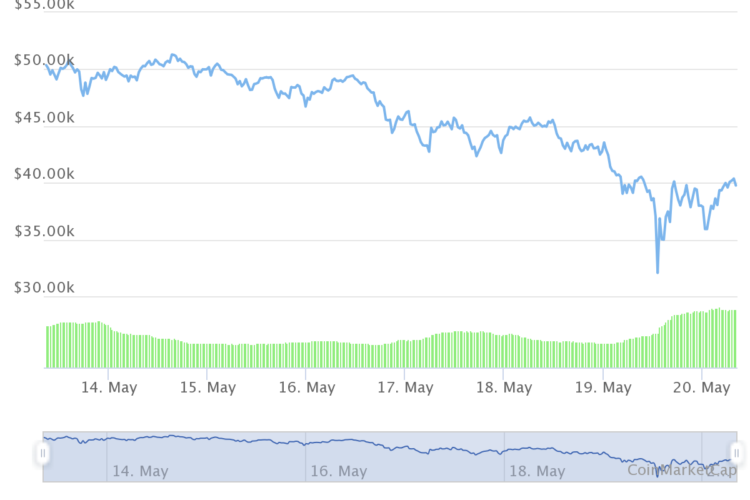Bitcoin (BTC) Dips Under $30K, Starts Recovery

#
Bitcoin (BTC) did not start dipping below key levels on Wednesday, touching $26K prices on the daily candle. The price moves took the market by surprise, as BTC spent the past weeks with relative stability.

The recent crash happened on highly active trading, exceeding all previous records to reach $130B in the past 24 hours. Even by the volatility standards of crypto space, such trading and price action are rare and unprecedented.
Crypto markets function in an entirely unregulated fashion, and trading continued despite the wild price swings. One of the biggest hurdles was the fact that exchanges and brokerages stopped working and some disabled deposits. The price crash was a stress test for the entire crypto ecosystem, showing that dwindling liquidity and technical issues could block trading.
The recent events sent the Bitcoin fear and greed index into “extreme fear” territory. BTC has not traded with this sentiment since the crash of March 2020, when prices were 90% lower compared to the current level.
The market has since recovered some of the losses, with BTC standing above $40,000 once again. Traders have tried to glean the reasons for this dramatic price drop, to reveal potential future weaknesses.
Long Positions Attacked
The recent rapid drop in prices may stem from an attack on long positions that were getting sufficiently funded over time despite the slide in prices. BTC saw the highest long position liquidation since March 2020, with 10,525 BTC liquidated.
Leveraged positions are one of the chief drivers of rapid price change. The liquidations for some leveraged positions were also due to the inability of traders to fulfill their margin requirements due to exchange portals closing, or network congestion.
Insider Trading Suspected
In a fully unregulated market, concerted efforts to sway the price are a possibility. Social media suggested the BTC price swing may be a concerted effort by “whales” to liquidate longs, while even predicting the market bottom around $30,000.
The insider trading hypothesis also suggests BTC is not going to zero, but just enough to achieve a trading objective. After the crash and recovery, BTC withdrawals from exchanges continued, a trend that has been observed in the past months.
In addition to the decision of miners to hold onto their coins, the long-term prospects for BTC remain optimistic.
Is BTC Already Showing Signs of Recovery?
BTC has a past history of recovering from 35% drops, in hindsight turning them into just small anomalies on its bullish trend. There are already signs the sentiment may be shifting, as retail and corporate accumulation are unaffected by short-term leveraged market swings.
One of the potential signs of renewed interest in BTC are the stablecoin transfers to big exchanges. At the same time, BTC was deposited to both spot and derivative markets, setting the stage for the next run of price discovery.
Stablecoins Come to the Rescue
Several large-scale transactions of USDT happened on Thursday, potentially lifting asset prices. The turnover of USDT actually increased in the past days of trading, with the velocity of money expanding from 300% to 500%. The entire USDT supply is traded up to 5 times through the crypto exchange system each day, becoming the most active crypto asset.
The previously retired USDT once again left the Tether, Inc. wallet to participate in trading. Another big transaction arrived on the Huobi exchange.
Other stablecoins are joining the market, in this case, USDC, the semi-centralized token that is also fully transparent and backed by fiat deposits.
Ethereum Ecosystem Survives Crash
The Ethereum ecosystem also saw wild price swings, which turned out to be a stress test for all DeFi protocols. The biggest problem for ETH price crashes is that decentralized lending protocols need to liquidate their collaterals and cover the loans.
This time, however, the effect of DeFi saver helped protect decentralized lending from liquidations. Participation in DeFi is usually over-collateralized. But using services such as DeFi Saver can help traders boost their collateral during more turbulent market times.
DeFi Saver could not protect all positions, as ETH crashed too low for a brief spell. But decentralized lending and trading managed to survive the crash, while preserving their activity, while centralized exchanges reported outages.
The value locked in DeFi fell from $80B to $59B, mostly on top of the dropping ETH and BTC prices, which are used as collateral. But the space managed to preserve its trading volumes as an alternative to centralized exchanges.
Most DeFi protocol tokens are down about 30% since last week, with MKR down to the $3,700 range and UNI back to $25.
#
Uphold makes buying crypto with popular currencies like USD, EUR and GBP very simple with its convenient options to swap between crypto, fiat, equities, and precious metals.

With over 50 coins and an obsession with security, Kraken is one of the safest places to buy and trade crypto.

Kraken has a good reputation for security and protection of your funds and operates across the USA (except NY), Canada, the EU and Japan

Based in Charleston, South Carolina. Serves over 184 countries and has done over $4 billion in transactions. Offers convenient options to swap between crypto, fiat, equities, and precious metals.

Eight ways to buy Bitcoin without needing ID or giving personal information

We are now paying prizes in Iota. Learn a bit about it and where you can buy, sell and store it

The first cryptocurrency. It has limitations for transactions but it is still the most popular being secure, trusted and independent from banks and governments.

Solana is a cryptocurrency project with a radically different approach to how blockchains work. It focuses on an element which is very simple: time. It seems introducing a decentralised clock to a cryptocurrency blockchain makes it more efficient than anyone could have possibly imagined. Solana is a high-performance cryptocurrency blockchain which supports smart contracts and decentralised applications. It uses proof of stake consensus mechanism with a low barrier to entry along with timestamped transactions to maximise efficiency.